Feitian Zhang
ST-Booster: An Iterative SpatioTemporal Perception Booster for Vision-and-Language Navigation in Continuous Environments
Apr 14, 2025Abstract:Vision-and-Language Navigation in Continuous Environments (VLN-CE) requires agents to navigate unknown, continuous spaces based on natural language instructions. Compared to discrete settings, VLN-CE poses two core perception challenges. First, the absence of predefined observation points leads to heterogeneous visual memories and weakened global spatial correlations. Second, cumulative reconstruction errors in three-dimensional scenes introduce structural noise, impairing local feature perception. To address these challenges, this paper proposes ST-Booster, an iterative spatiotemporal booster that enhances navigation performance through multi-granularity perception and instruction-aware reasoning. ST-Booster consists of three key modules -- Hierarchical SpatioTemporal Encoding (HSTE), Multi-Granularity Aligned Fusion (MGAF), and ValueGuided Waypoint Generation (VGWG). HSTE encodes long-term global memory using topological graphs and captures shortterm local details via grid maps. MGAF aligns these dualmap representations with instructions through geometry-aware knowledge fusion. The resulting representations are iteratively refined through pretraining tasks. During reasoning, VGWG generates Guided Attention Heatmaps (GAHs) to explicitly model environment-instruction relevance and optimize waypoint selection. Extensive comparative experiments and performance analyses are conducted, demonstrating that ST-Booster outperforms existing state-of-the-art methods, particularly in complex, disturbance-prone environments.
Bioinspired Sensing of Undulatory Flow Fields Generated by Leg Kicks in Swimming
Mar 10, 2025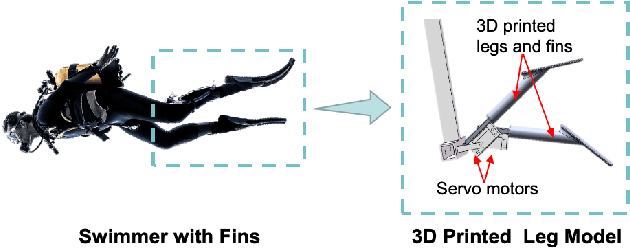
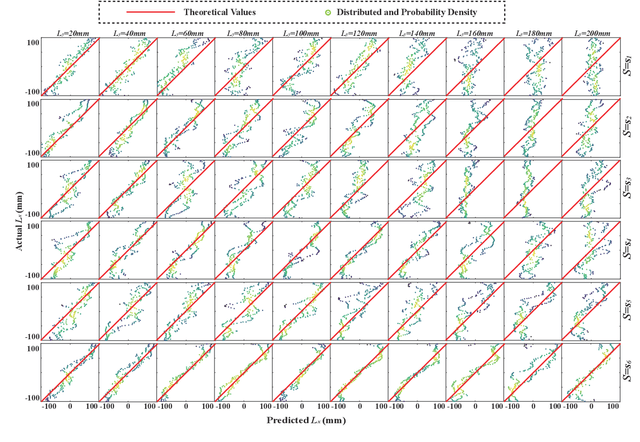
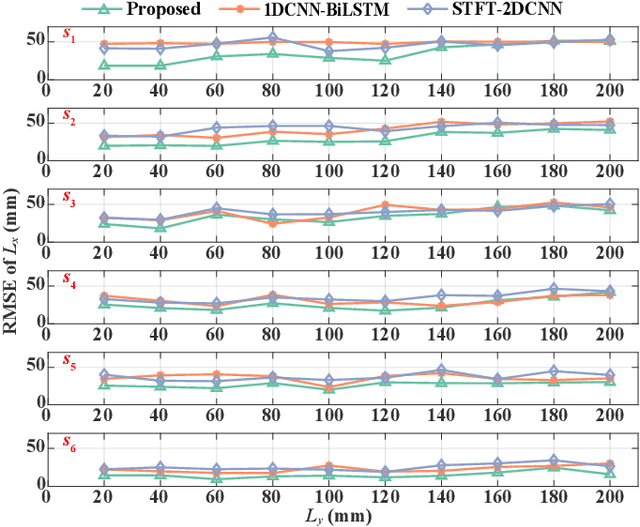
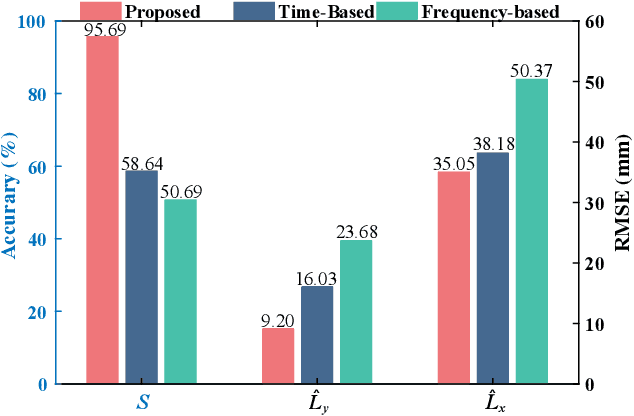
Abstract:The artificial lateral line (ALL) is a bioinspired flow sensing system for underwater robots, comprising of distributed flow sensors. The ALL has been successfully applied to detect the undulatory flow fields generated by body undulation and tail-flapping of bioinspired robotic fish. However, its feasibility and performance in sensing the undulatory flow fields produced by human leg kicks during swimming has not been systematically tested and studied. This paper presents a novel sensing framework to investigate the undulatory flow field generated by swimmer's leg kicks, leveraging bioinspired ALL sensing. To evaluate the feasibility of using the ALL system for sensing the undulatory flow fields generated by swimmer leg kicks, this paper designs an experimental platform integrating an ALL system and a lab-fabricated human leg model. To enhance the accuracy of flow sensing, this paper proposes a feature extraction method that dynamically fuses time-domain and time-frequency characteristics. Specifically, time-domain features are extracted using one-dimensional convolutional neural networks and bidirectional long short-term memory networks (1DCNN-BiLSTM), while time-frequency features are extracted using short-term Fourier transform and two-dimensional convolutional neural networks (STFT-2DCNN). These features are then dynamically fused based on attention mechanisms to achieve accurate sensing of the undulatory flow field. Furthermore, extensive experiments are conducted to test various scenarios inspired by human swimming, such as leg kick pattern recognition and kicking leg localization, achieving satisfactory results.
Design, Dynamic Modeling and Control of a 2-DOF Robotic Wrist Actuated by Twisted and Coiled Actuators
Mar 07, 2025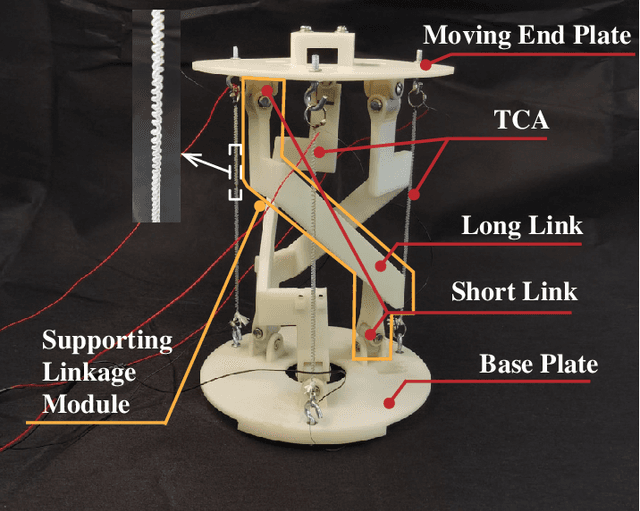
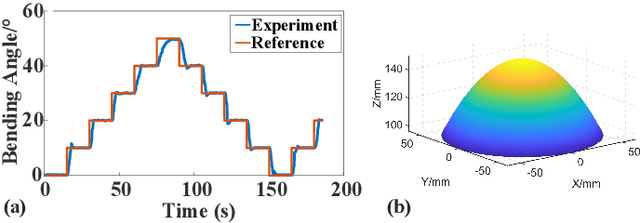

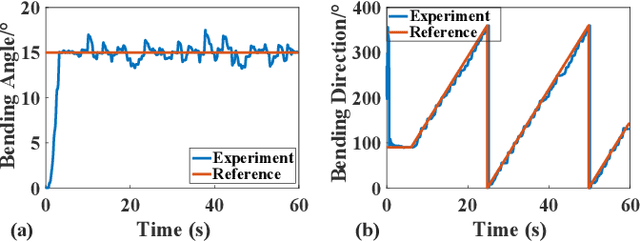
Abstract:Robotic wrists play a pivotal role in the functionality of industrial manipulators and humanoid robots, facilitating manipulation and grasping tasks. In recent years, there has been a growing interest in integrating artificial muscle-driven actuators for robotic wrists, driven by advancements in technology offering high energy density, lightweight construction, and compact designs. However, in the study of robotic wrists driven by artificial muscles, dynamic model-based controllers are often overlooked, despite their critical importance for motion analysis and dynamic control of robots. This paper presents a novel design of a two-degree-of-freedom (2-DOF) robotic wrist driven by twisted and coiled actuators (TCA) utilizing a parallel mechanism with a 3RRRR configuration. The proposed robotic wrist is expected to feature lightweight structures and superior motion performance while mitigating friction issues. The Lagrangian dynamic model of the wrist is established, along with a nonlinear model predictive controller (NMPC) designed for trajectory tracking tasks. A prototype of the robotic wrist is developed, and extensive experiments are conducted to validate its superior motion performance and the proposed dynamic model. Subsequently, extensive comparative experiments between NMPC and PID controller were conducted under various operating conditions. The experimental results demonstrate the effectiveness and robustness of the dynamic model-based controller in the motion control of TCA-driven robotic wrists.
Learning-Based Leader Localization for Underwater Vehicles With Optical-Acoustic-Pressure Sensor Fusion
Feb 28, 2025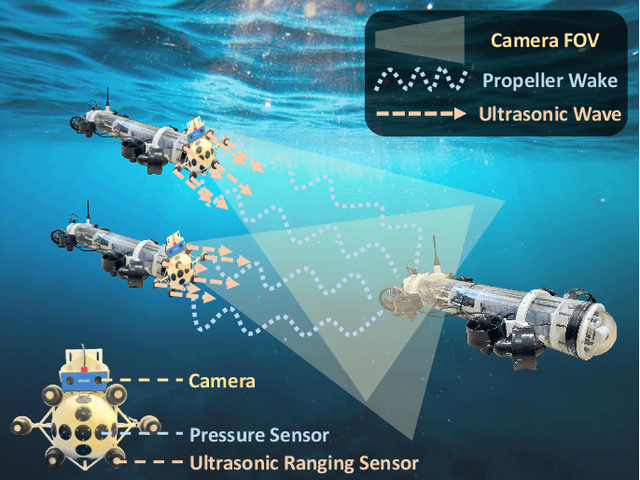
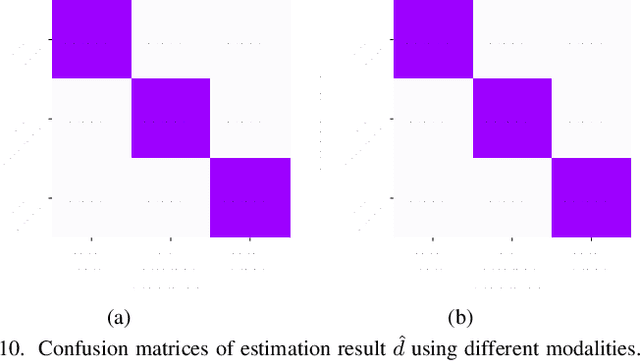
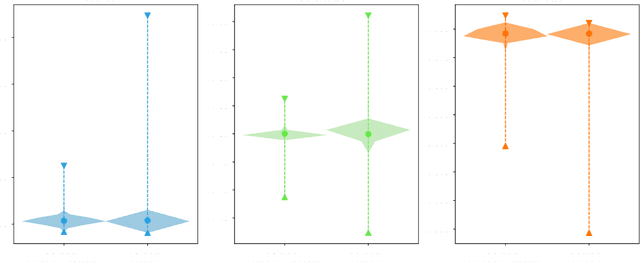
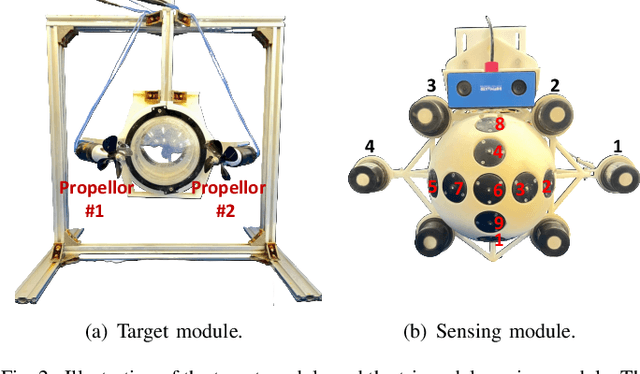
Abstract:Underwater vehicles have emerged as a critical technology for exploring and monitoring aquatic environments. The deployment of multi-vehicle systems has gained substantial interest due to their capability to perform collaborative tasks with improved efficiency. However, achieving precise localization of a leader underwater vehicle within a multi-vehicle configuration remains a significant challenge, particularly in dynamic and complex underwater conditions. To address this issue, this paper presents a novel tri-modal sensor fusion neural network approach that integrates optical, acoustic, and pressure sensors to localize the leader vehicle. The proposed method leverages the unique strengths of each sensor modality to improve localization accuracy and robustness. Specifically, optical sensors provide high-resolution imaging for precise relative positioning, acoustic sensors enable long-range detection and ranging, and pressure sensors offer environmental context awareness. The fusion of these sensor modalities is implemented using a deep learning architecture designed to extract and combine complementary features from raw sensor data. The effectiveness of the proposed method is validated through a custom-designed testing platform. Extensive data collection and experimental evaluations demonstrate that the tri-modal approach significantly improves the accuracy and robustness of leader localization, outperforming both single-modal and dual-modal methods.
Target Defense with Multiple Defenders and an Agile Attacker via Residual Policy Learning
Feb 25, 2025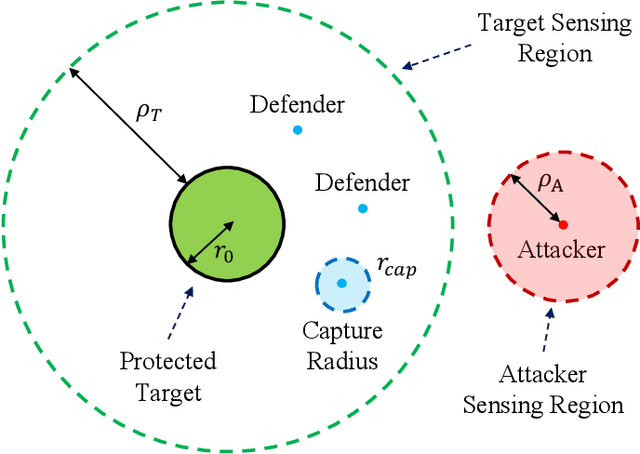

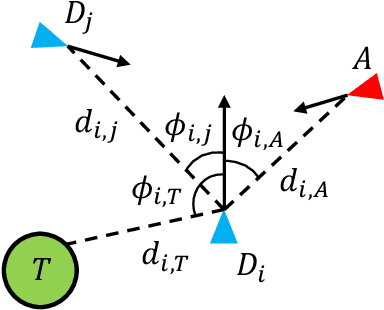
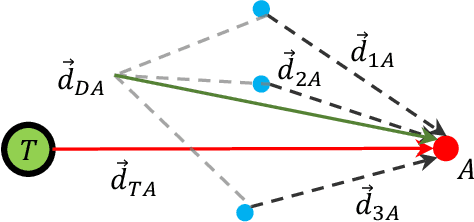
Abstract:The target defense problem involves intercepting an attacker before it reaches a designated target region using one or more defenders. This letter focuses on a particularly challenging scenario in which the attacker is more agile than the defenders, significantly increasing the difficulty of effective interception. To address this challenge, we propose a novel residual policy framework that integrates deep reinforcement learning (DRL) with the force-based Boids model. In this framework, the Boids model serves as a baseline policy, while DRL learns a residual policy to refine and optimize the defenders' actions. Simulation experiments demonstrate that the proposed method consistently outperforms traditional interception policies, whether learned via vanilla DRL or fine-tuned from force-based methods. Moreover, the learned policy exhibits strong scalability and adaptability, effectively handling scenarios with varying numbers of defenders and attackers with different agility levels.
Improving Collision-Free Success Rate For Object Goal Visual Navigation Via Two-Stage Training With Collision Prediction
Feb 19, 2025Abstract:The object goal visual navigation is the task of navigating to a specific target object using egocentric visual observations. Recent end-to-end navigation models based on deep reinforcement learning have achieved remarkable performance in finding and reaching target objects. However, the collision problem of these models during navigation remains unresolved, since the collision is typically neglected when evaluating the success. Although incorporating a negative reward for collision during training appears straightforward, it results in a more conservative policy, thereby limiting the agent's ability to reach targets. In addition, many of these models utilize only RGB observations, further increasing the difficulty of collision avoidance without depth information. To address these limitations, a new concept -- collision-free success is introduced to evaluate the ability of navigation models to find a collision-free path towards the target object. A two-stage training method with collision prediction is proposed to improve the collision-free success rate of the existing navigation models using RGB observations. In the first training stage, the collision prediction module supervises the agent's collision states during exploration to learn to predict the possible collision. In the second stage, leveraging the trained collision prediction, the agent learns to navigate to the target without collision. The experimental results in the AI2-THOR environment demonstrate that the proposed method greatly improves the collision-free success rate of different navigation models and outperforms other comparable collision-avoidance methods.
RGBlimp-Q: Robotic Gliding Blimp With Moving Mass Control Based on a Bird-Inspired Continuum Arm
Jun 16, 2024Abstract:Robotic blimps, as lighter-than-air aerial systems, offer prolonged duration and enhanced safety in human-robot interactions due to their buoyant lift. However, robust flight against environmental airflow disturbances remains a significant challenge, limiting the broader application of these robots. Drawing inspiration from the flight mechanics of birds and their ability to perch against natural wind, this article introduces RGBlimp-Q, a robotic gliding blimp equipped with a bird-inspired continuum arm. This arm allows for flexible attitude adjustments through moving mass control to enhance disturbance resilience, while also enabling object capture by using claws to counteract environmental disturbances, similar to a bird. This article presents the design, modeling, and prototyping of RGBlimp-Q, thus extending the advantages of robotic blimps to more complex environments. To the best of the authors' knowledge, this is the first interdisciplinary design integrating continuum mechanisms onto robotic blimps. Experimental results from both indoor and outdoor settings validate the improved flight robustness against environmental disturbances offered by this novel design.
An Efficient Learning Control Framework With Sim-to-Real for String-Type Artificial Muscle-Driven Robotic Systems
May 17, 2024



Abstract:Robotic systems driven by artificial muscles present unique challenges due to the nonlinear dynamics of actuators and the complex designs of mechanical structures. Traditional model-based controllers often struggle to achieve desired control performance in such systems. Deep reinforcement learning (DRL), a trending machine learning technique widely adopted in robot control, offers a promising alternative. However, integrating DRL into these robotic systems faces significant challenges, including the requirement for large amounts of training data and the inevitable sim-to-real gap when deployed to real-world robots. This paper proposes an efficient reinforcement learning control framework with sim-to-real transfer to address these challenges. Bootstrap and augmentation enhancements are designed to improve the data efficiency of baseline DRL algorithms, while a sim-to-real transfer technique, namely randomization of muscle dynamics, is adopted to bridge the gap between simulation and real-world deployment. Extensive experiments and ablation studies are conducted utilizing two string-type artificial muscle-driven robotic systems including a two degree-of-freedom robotic eye and a parallel robotic wrist, the results of which demonstrate the effectiveness of the proposed learning control strategy.
Adaptive Integral Sliding Mode Control for Attitude Tracking of Underwater Robots With Large Range Pitch Variations in Confined Space
May 01, 2024
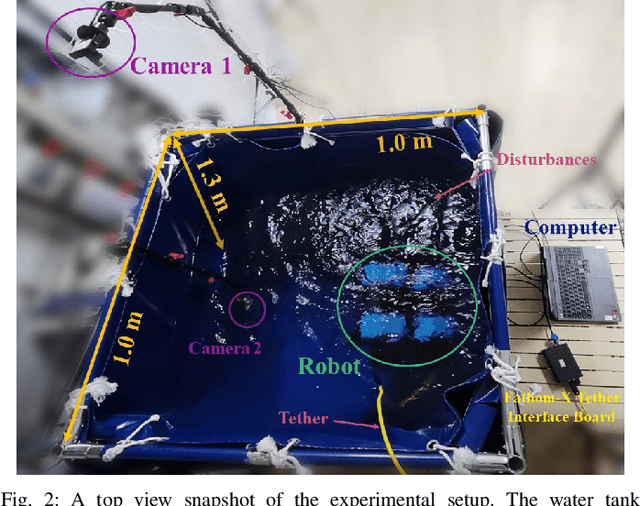
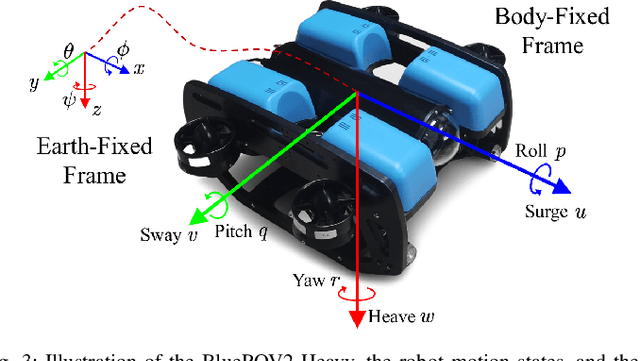

Abstract:Underwater robots play a crucial role in exploring aquatic environments. The ability to flexibly adjust their attitudes is essential for underwater robots to effectively accomplish tasks in confined space. However, the highly coupled six degrees of freedom dynamics resulting from attitude changes and the complex turbulence within limited spatial areas present significant challenges. To address the problem of attitude control of underwater robots, this letter investigates large-range pitch angle tracking during station holding as well as simultaneous roll and yaw angle control to enable versatile attitude adjustments. Based on dynamic modeling, this letter proposes an adaptive integral sliding mode controller (AISMC) that integrates an integral module into traditional sliding mode control (SMC) and adaptively adjusts the switching gain for improved tracking accuracy, reduced chattering, and enhanced robustness. The stability of the closed-loop control system is established through Lyapunov analysis. Extensive experiments and comparison studies are conducted using a commercial remotely operated vehicle (ROV), the results of which demonstrate that AISMC achieves satisfactory performance in attitude tracking control in confined space with unknown disturbances, significantly outperforming both PID and SMC.
Data-Driven Dynamics Modeling of Miniature Robotic Blimps Using Neural ODEs With Parameter Auto-Tuning
Apr 29, 2024Abstract:Miniature robotic blimps, as one type of lighter-than-air aerial vehicles, have attracted increasing attention in the science and engineering community for their enhanced safety, extended endurance, and quieter operation compared to quadrotors. Accurately modeling the dynamics of these robotic blimps poses a significant challenge due to the complex aerodynamics stemming from their large lifting bodies. Traditional first-principle models have difficulty obtaining accurate aerodynamic parameters and often overlook high-order nonlinearities, thus coming to its limit in modeling the motion dynamics of miniature robotic blimps. To tackle this challenge, this letter proposes the Auto-tuning Blimp-oriented Neural Ordinary Differential Equation method (ABNODE), a data-driven approach that integrates first-principle and neural network modeling. Spiraling motion experiments of robotic blimps are conducted, comparing the ABNODE with first-principle and other data-driven benchmark models, the results of which demonstrate the effectiveness of the proposed method.
 Add to Chrome
Add to Chrome Add to Firefox
Add to Firefox Add to Edge
Add to Edge